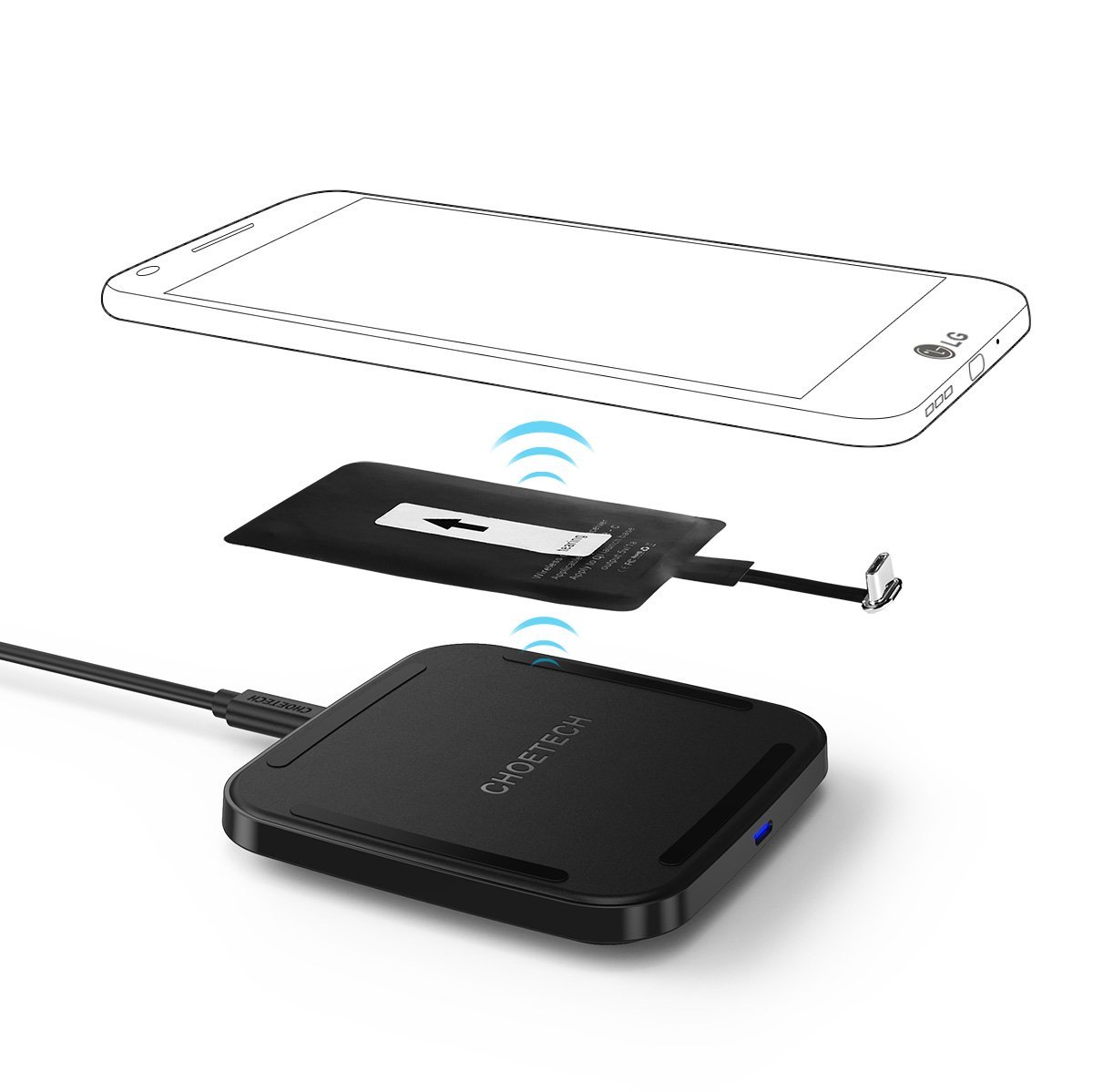By Gary Elinoff, contributing writer
Wireless charging is a feature much in demand by today’s consumers, and for good reason — it’s just no fun carrying around a mini USB cable and then plugging and unplugging it every time your smartphone starts to run dry. This is especially true now that just about everyone transfers pictures, videos, and other information to and from smartphones wirelessly, so why shouldn’t the same be true for charging power?
Up until the present, Apple was conspicuously missing from the ranks of smartphone providers offering wireless charging, but rumor has it that this may be changing. Conversely, many of the major builders of Android-based devices, with the notable exception of Samsung, seem to be abandoning it.
Fortunately, there are products that you can buy for almost any phone to effect wireless charging, and they all work in a manner similar to a classical transformer. An induction coil in the charger base is used to generate an alternating electromagnetic field, which is intercepted by the receiver coil in the device to be charged, and that second coil converts it back into an AC voltage. That electricity, in turn, is rectified and converted into just the right voltage and current for the specific smartphone.
Commercially available wireless smartphone chargers usually involve being integrated into a protective case, which most users buy anyway to protect their expensive investment. The receiver coil and its associated electronics are included, as is a short cable to be semi-permanently inserted into the phone’s charging port.
The most well-known product of this type for the iPhone 7 and the iPhone 7 Plus is the Charge Force Case from Morphie. The charger base, which contains the first coil, is not included, but the Charge Force Case can accept power from any charging pad that adheres to either of the two main industry standards, Qi or PMA.

Wireless charger. Image source: Choetech.
The problem with this type of solution is matching the case to each of a wide variation of phone sizes and shapes. A simpler solution is to install the receiver coil and the electronics into a small, plastic-encased package that sticks on externally to a smartphone. In many cases, these are thin enough to be hidden under a conventional protective case.
Live dangerously and do it yourself
You can also skip the middleman and install wireless charging yourself into your own smartphone, as described by howtogeek. But this is definitely not a project for beginners — or for the faint of heart.
The first step is to find a receiver cable, but that’s the easy part. Now the journey into danger begins, because the next thing you have to do is to open up your smartphone and then bestir thyself, because you’re going to have to do some fancy soldering in some very tight places. So, hold your breath, cross your fingers, and check out the video below.
Be warned: It’s not recommended that you try this at home unless you make your living in smartphone repairs.
Advertisement
Learn more about Electronic Products Magazine





